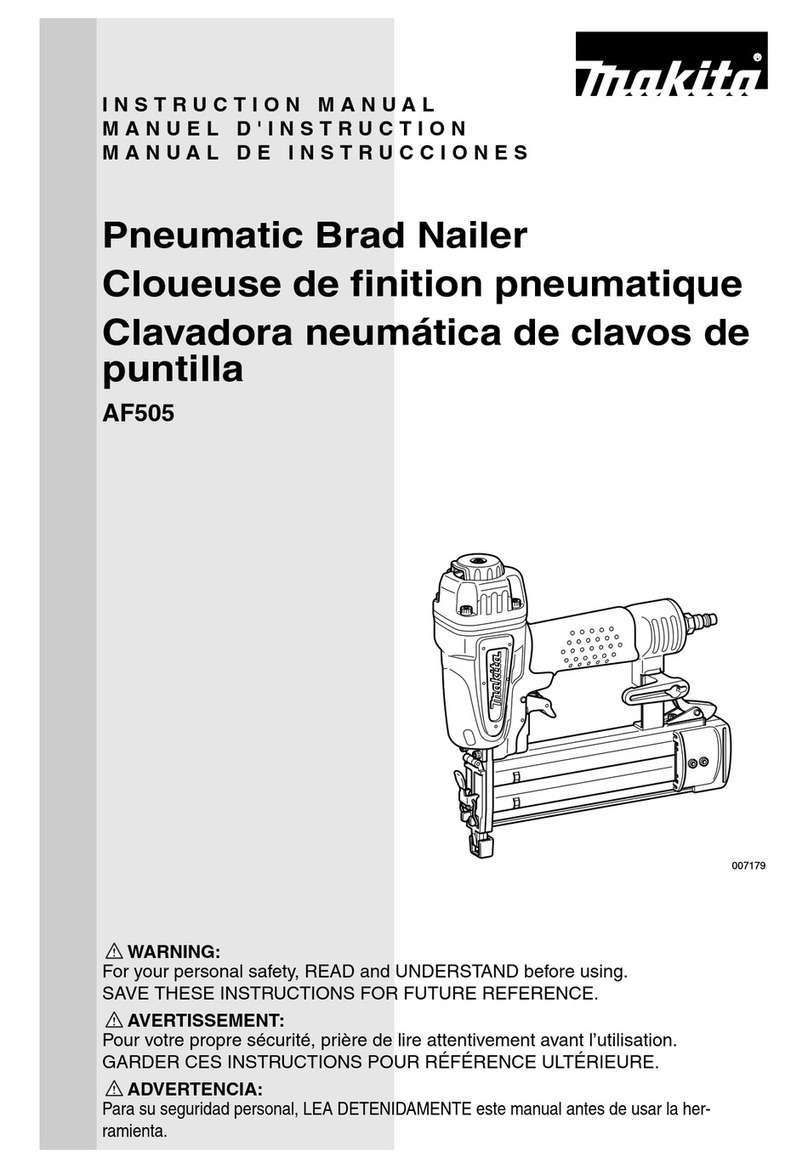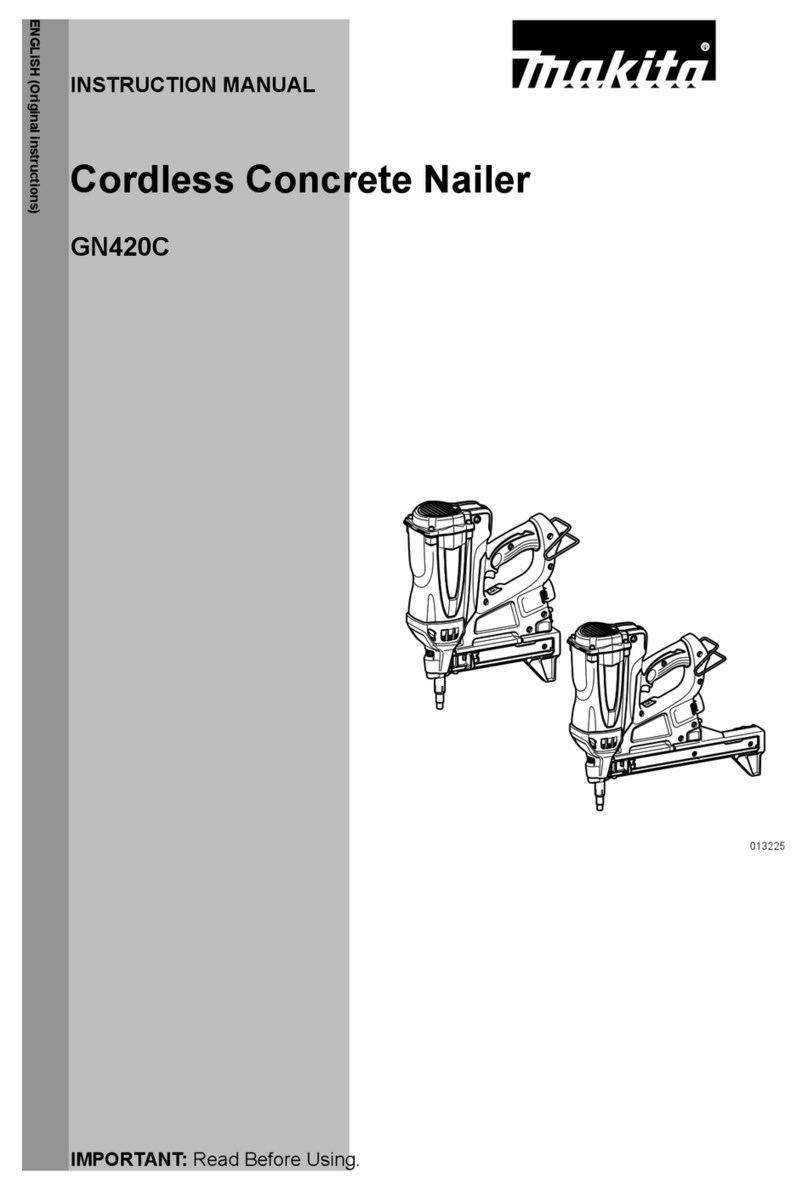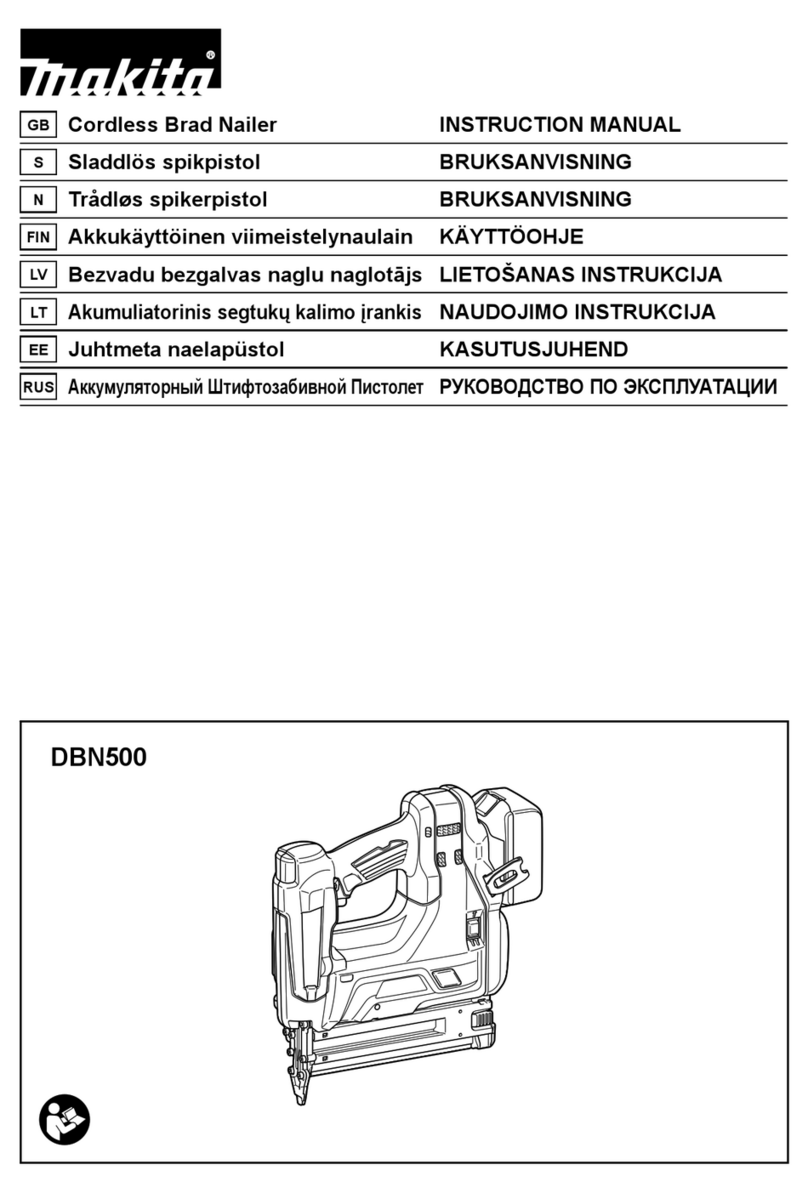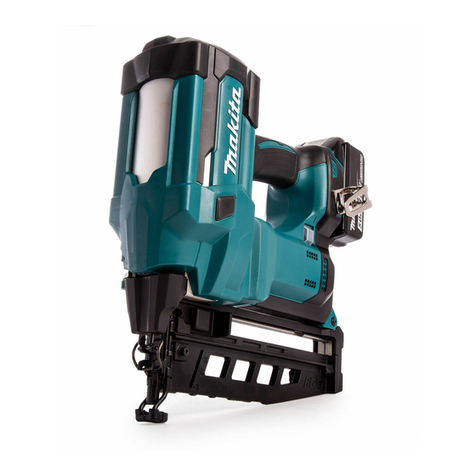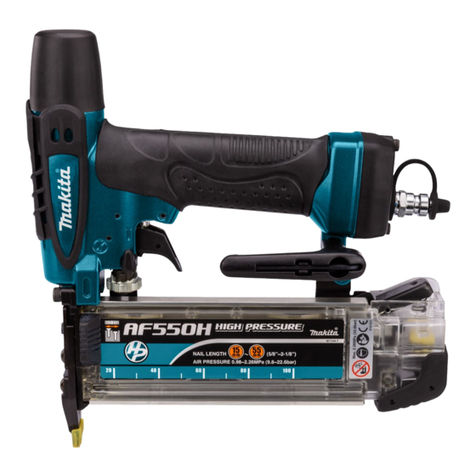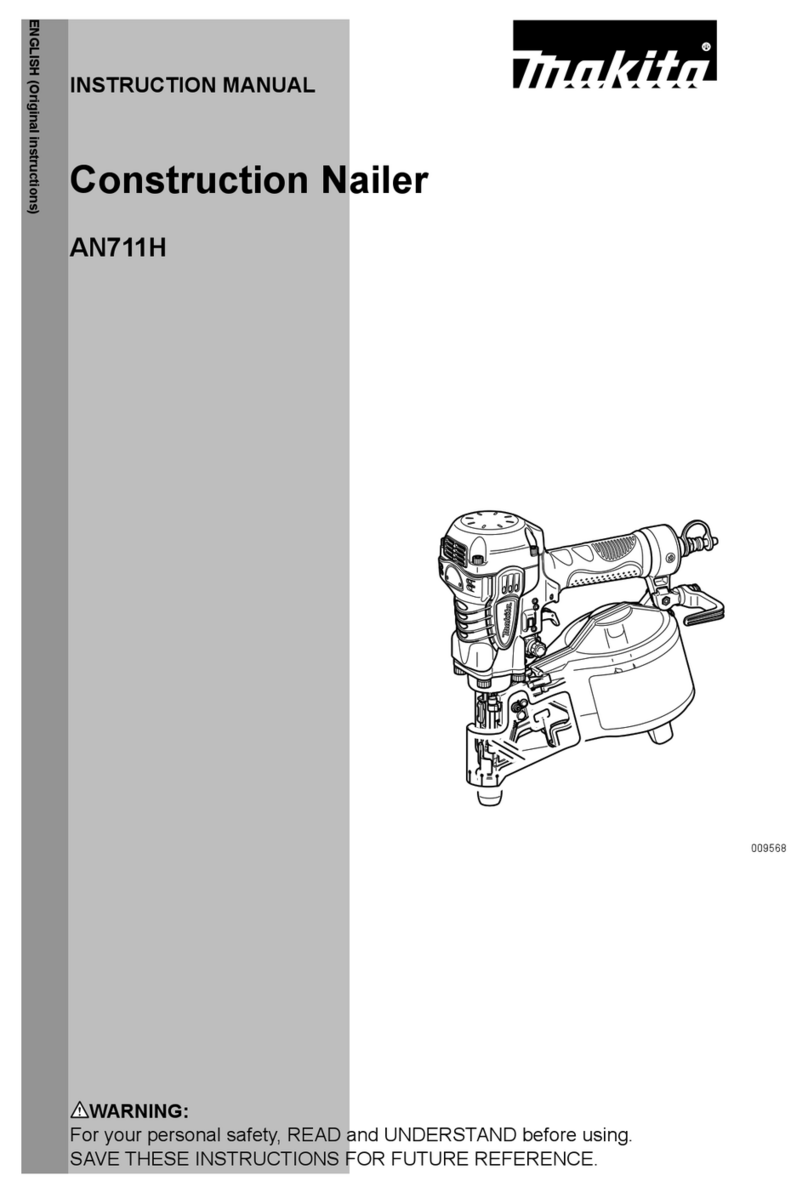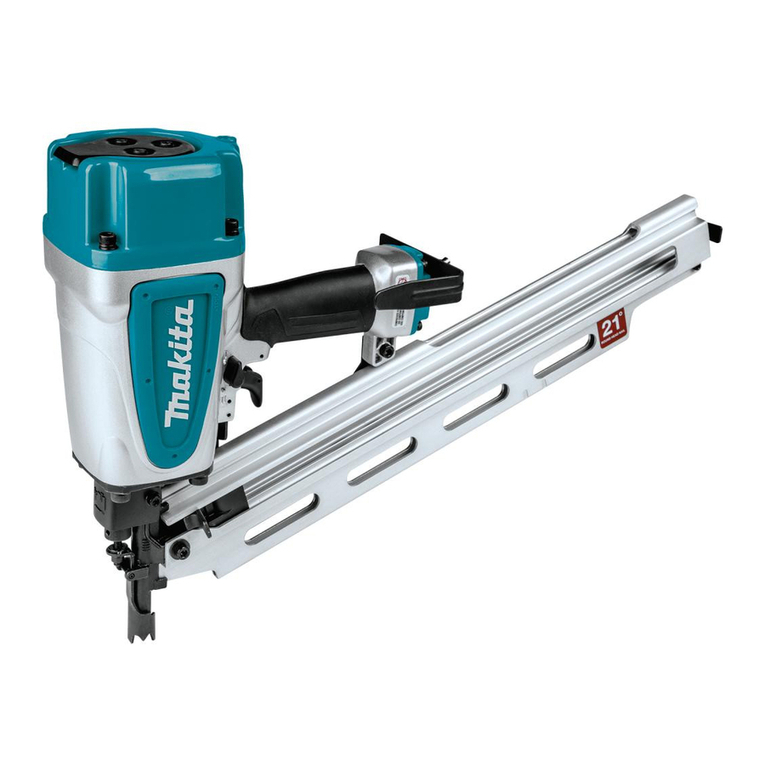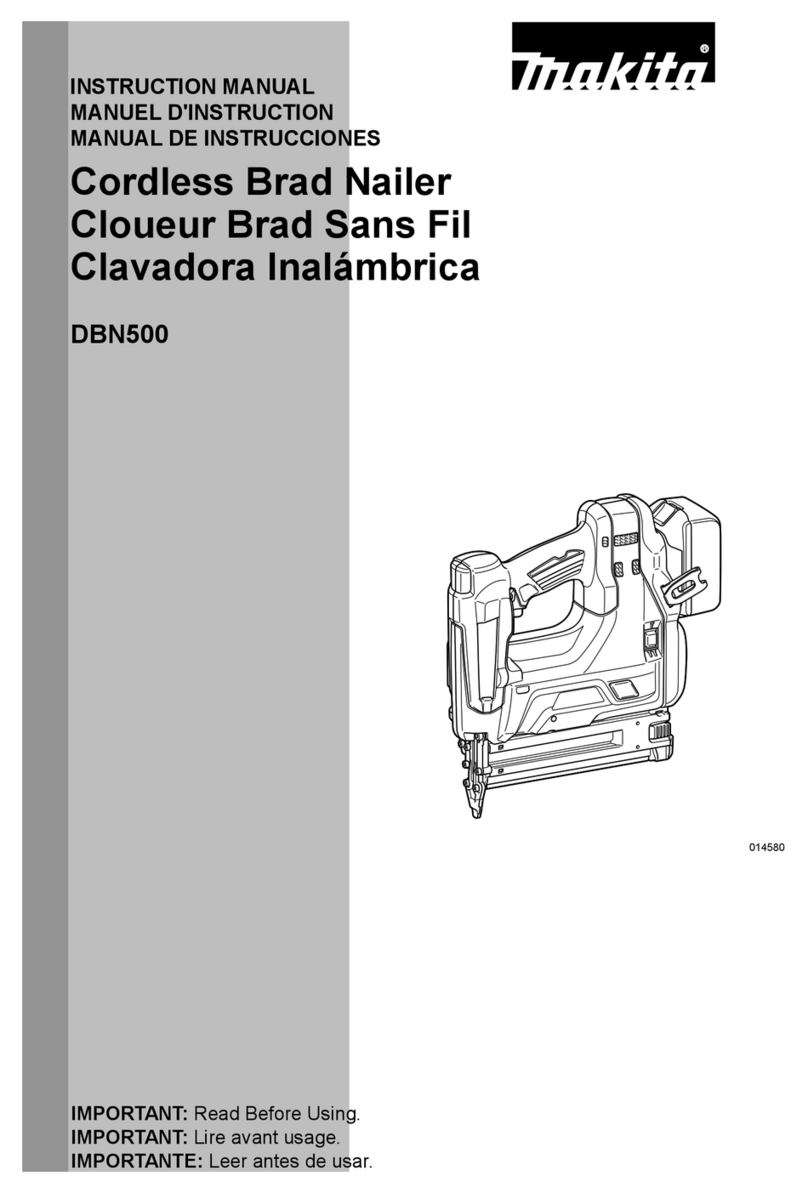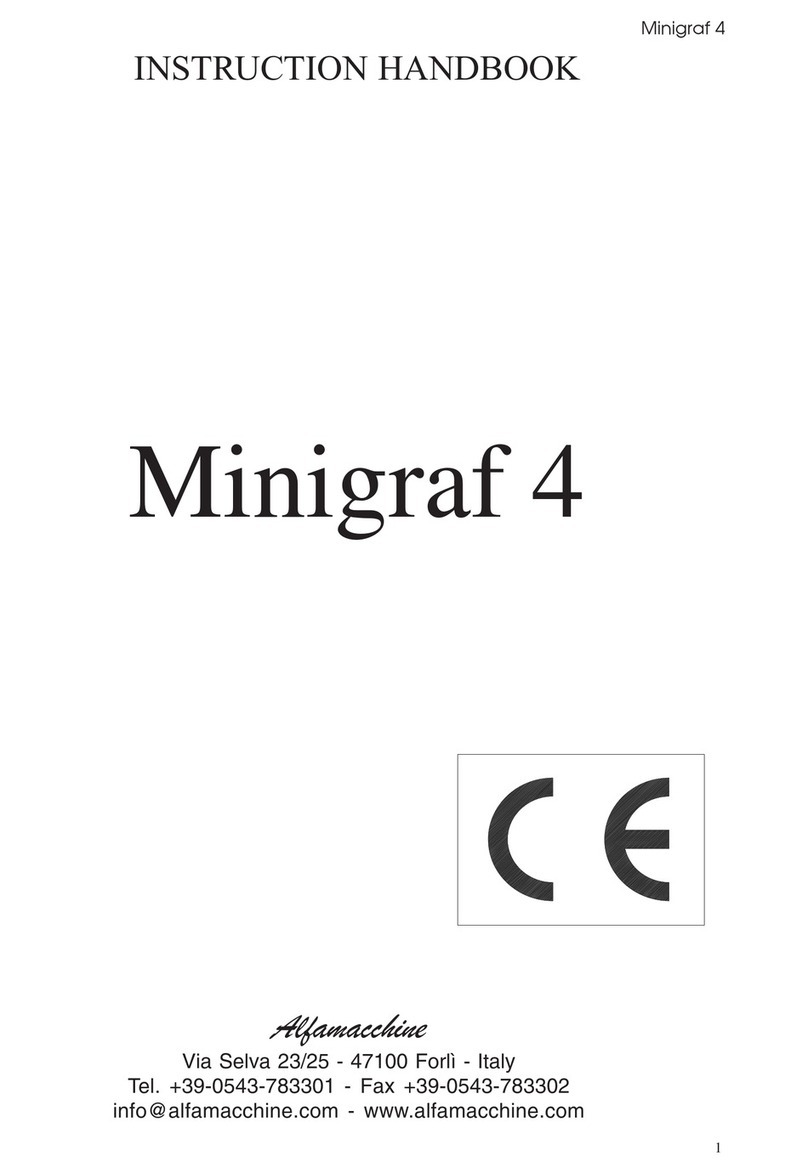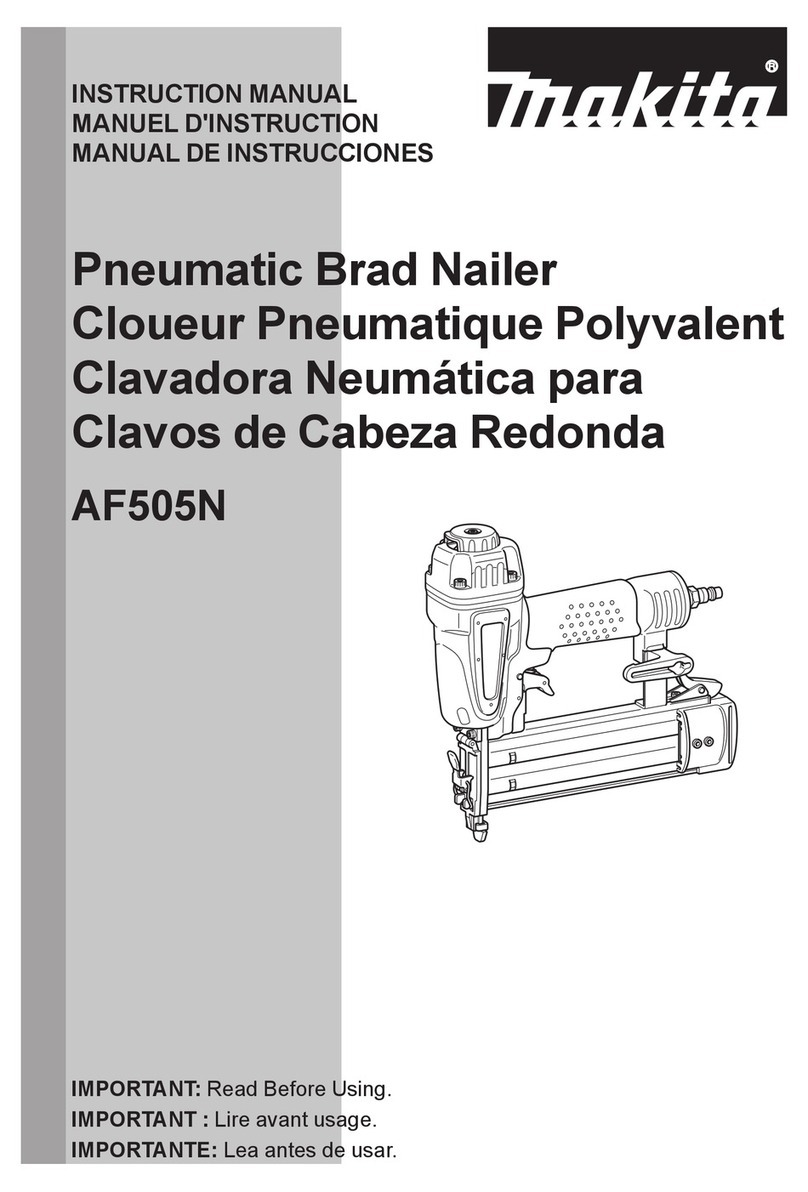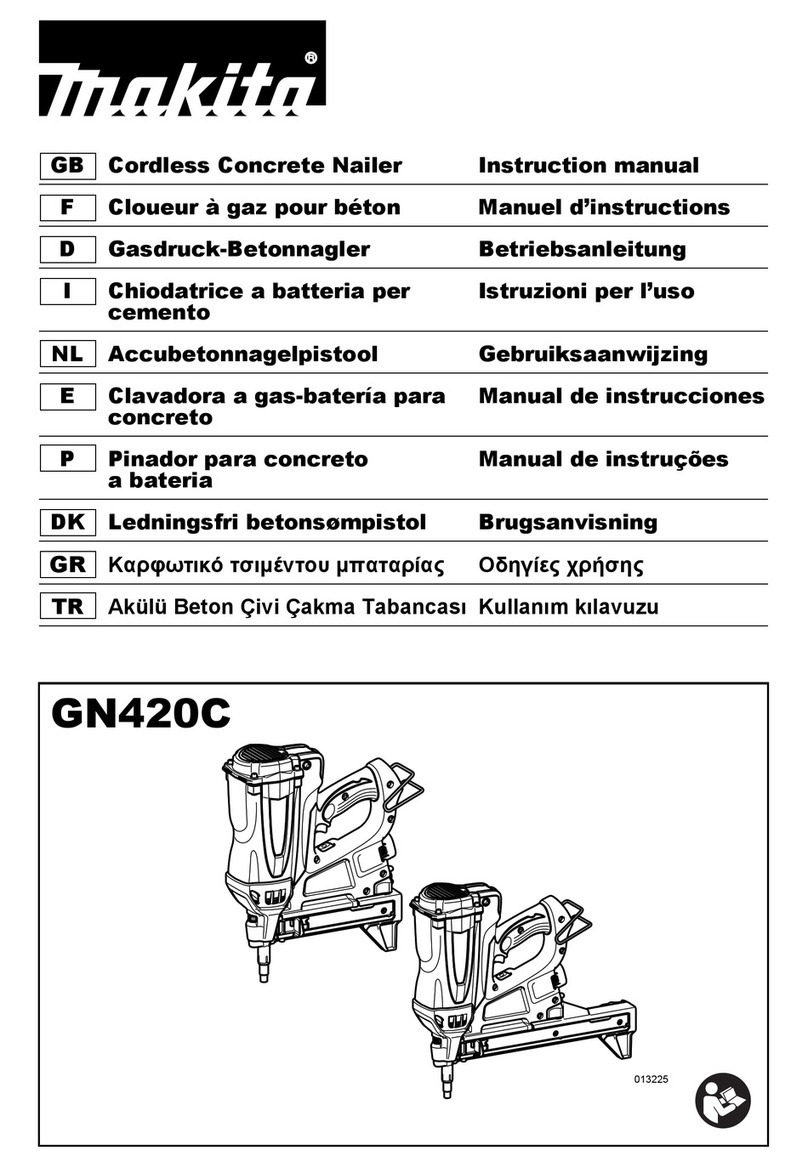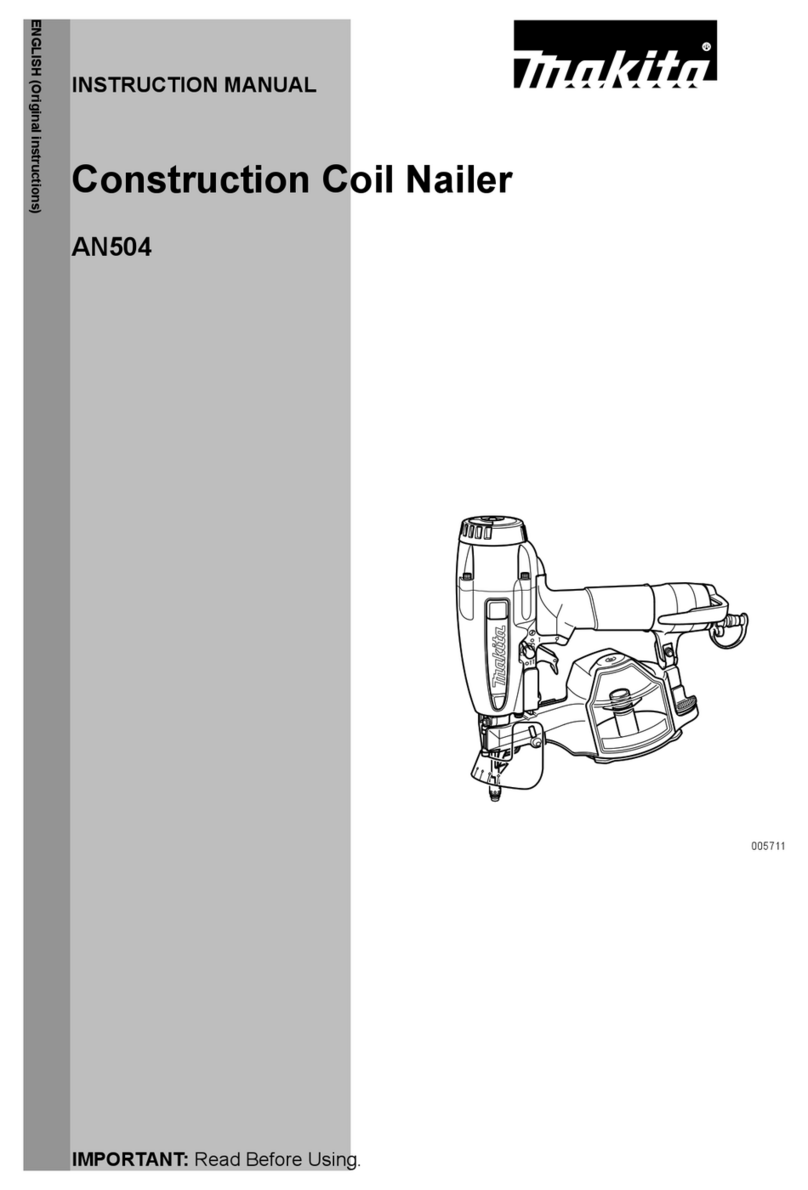4ENGLISH
12. Never use fastener driving tools marked with
the symbol "Do not use on scaffoldings, lad-
ders" for specic application for example:
—
when changing one driving location to another
involves the use of scaffoldings, stairs, ladders,
or ladder alike constructions, e.g. roof laths;
— closing boxes or crates;
— ttingtransportationsafetysystemse.g.on
vehicles and wagons.
13.
Watch your footing and maintain your balance
with the tool. Make sure there is no one below when
working in high locations, and secure the air hose to
prevent danger if there is sudden jerking or catching.
14.
On rooftops and other high locations, drive fas-
teners as you move forward. It is easy to lose your
footing if you drive fasteners while inching backward.
When driving fasteners against perpendicular sur-
face, work from the top to the bottom. You can per-
form driving operations with less fatigue by doing so.
15. A fastener will be bent or the tool can become
jammed if you mistakenly drive fastener on
top of another fastener or strike a knot in the
wood. The fastener may be thrown and hit
someone, or the tool itself can react danger-
ously. Place the fasteners with care.
16. Do not leave the loaded tool or the air com-
pressor under pressure for a long time out in
the sun. Be sure that dust, sand, chips and
foreign matter will not enter the tool in the
place where you leave it setting.
17.
Never attempt to drive fasteners from both the
inside and outside at the same time. Fasteners may
ripthroughand/oryoff,presentingagravedanger.
Repetitive motions hazards
1.
When using a tool for long periods, the operator
may experience discomfort in the hands, arms,
shoulders, neck, or other parts of the body.
2. While using a tool, the operator should adopt
a suitable but ergonomic posture. Maintain
secure footing and avoid awkward or off-bal-
anced postures.
3.
If the operator experiences symptoms such as
persistent or recurring discomfort, pain, throb-
bing, aching, tingling, numbness, burning sen-
sation, or stiffness, do not ignore these warning
signs. The operator should consult a qualied
health professional regarding overall activities.
Accessory and consumable hazards
1. Disconnect the energy supply to the tool, such
as air or gas or battery as applicable, before
changing/replacing accessories such as work-
piece contact, or making any adjustments.
2. Use only the sizes and types of accessories
that are provided by the manufacturer.
3.
Use only lubricants recommended in this manual.
Workplace hazards
1. Slips, trips and falls are major causes of work-
place injury. Be aware of slippery surfaces
caused by use of the tool and also of trip haz-
ards caused by the air line hose.
2. Proceed with additional care in unfamiliar
surroundings. Hidden hazards may exist, such
as electricity or other utility lines.
3. This tool is not intended for use in potentially
explosive atmospheres and is not insulated
from coming into contact with electric power.
4. Make sure there are no electrical cables, gas
pipes etc. that could cause a hazard if dam-
aged by use of the tool.
5. Keep work area clean and well lit. Cluttered or
dark areas invite accidents.
6. Illuminate the work area sufciently.
7.
There may be local regulations concerning
noise which must be complied with by keeping
noise levels within prescribed limits. In certain
cases, shutters should be used to contain noise.
Dust and exhaust hazards
1. Always check your surroundings. The air
exhausted from the tool may blow dust or
objects and hit operator and/or bystanders.
Noise hazards
1. Unprotected exposure to high noise levels can
cause permanent, disabling, hearing loss and
other problems such as tinnitus (ringing, buzz-
ing, whistling or humming in the ears).
2. Appropriate controls to reduce the risk may
include actions such as damping materials to
prevent workpieces from "ringing".
3. Use appropriate hearing protection.
4. Operate and maintain the tool as recom-
mended in these instructions, to prevent an
unnecessary increase in noise levels.
5. The noise values are tool-related characteristic
values and do not represent the noise gener-
ation at the point of use. Noise at the point of
use will for example depend on the working
environment, the workpiece, the workpiece
support, and the number of driving operations.
Vibration hazards
1.
The vibration emission value is a tool-related
characteristic value and does not represent the
inuence to the hand-arm-system when using
the tool. Any inuence to the hand-arm-system
when using the tool will for example depend on
the gripping force, the contact pressure force,
the working direction, the adjustment of energy
supply, the workpiece, the workpiece support.
2. Exposure to vibration can cause disabling
damage to the nerves and blood supply of the
hands and arms.
3. Wear warm clothing when working in cold
conditions, keep your hands warm and dry.
4.
If you experience numbness, tingling, pain or
whitening of the skin in your ngers or hands,
seek medical advice from a qualied occupational
health professional regarding overall activities.
5. Operate and maintain the tool as recom-
mended in these instructions, to prevent an
unnecessary increase in vibration levels.
6. Hold the tool with a light, but safe, grip
because the risk from vibration is generally
greater when the grip force is higher.
Additional safety instructions for pneumatic tools
1. Compressed air can cause severe injury.
2. Always shut off air supply, and disconnect tool
from air supply when not in use.

